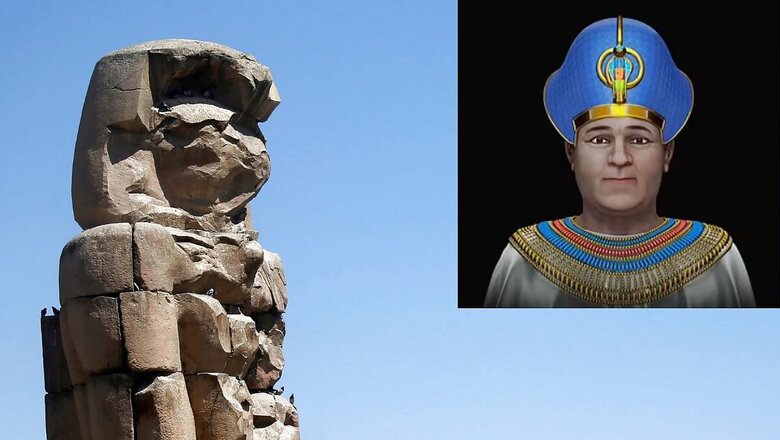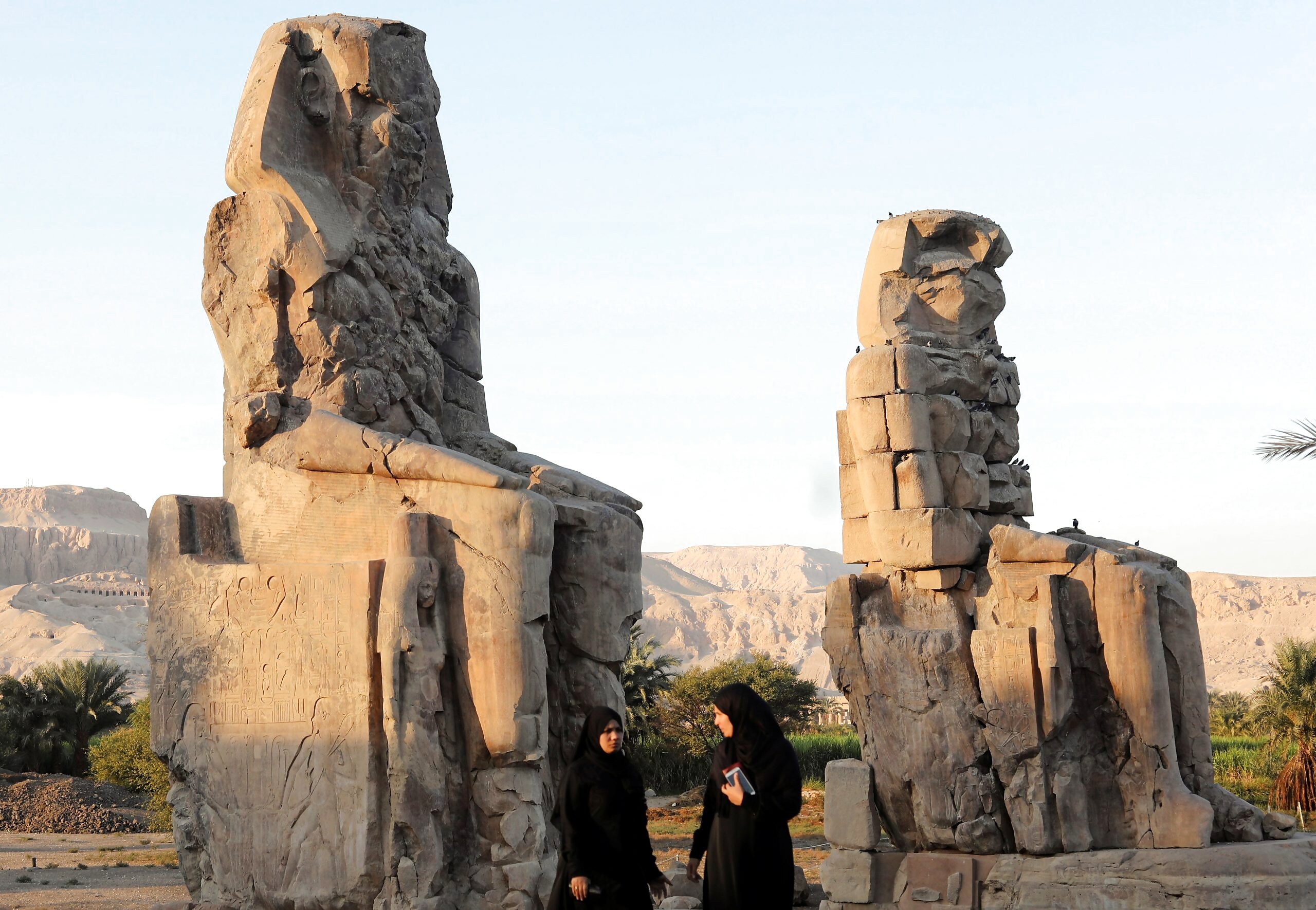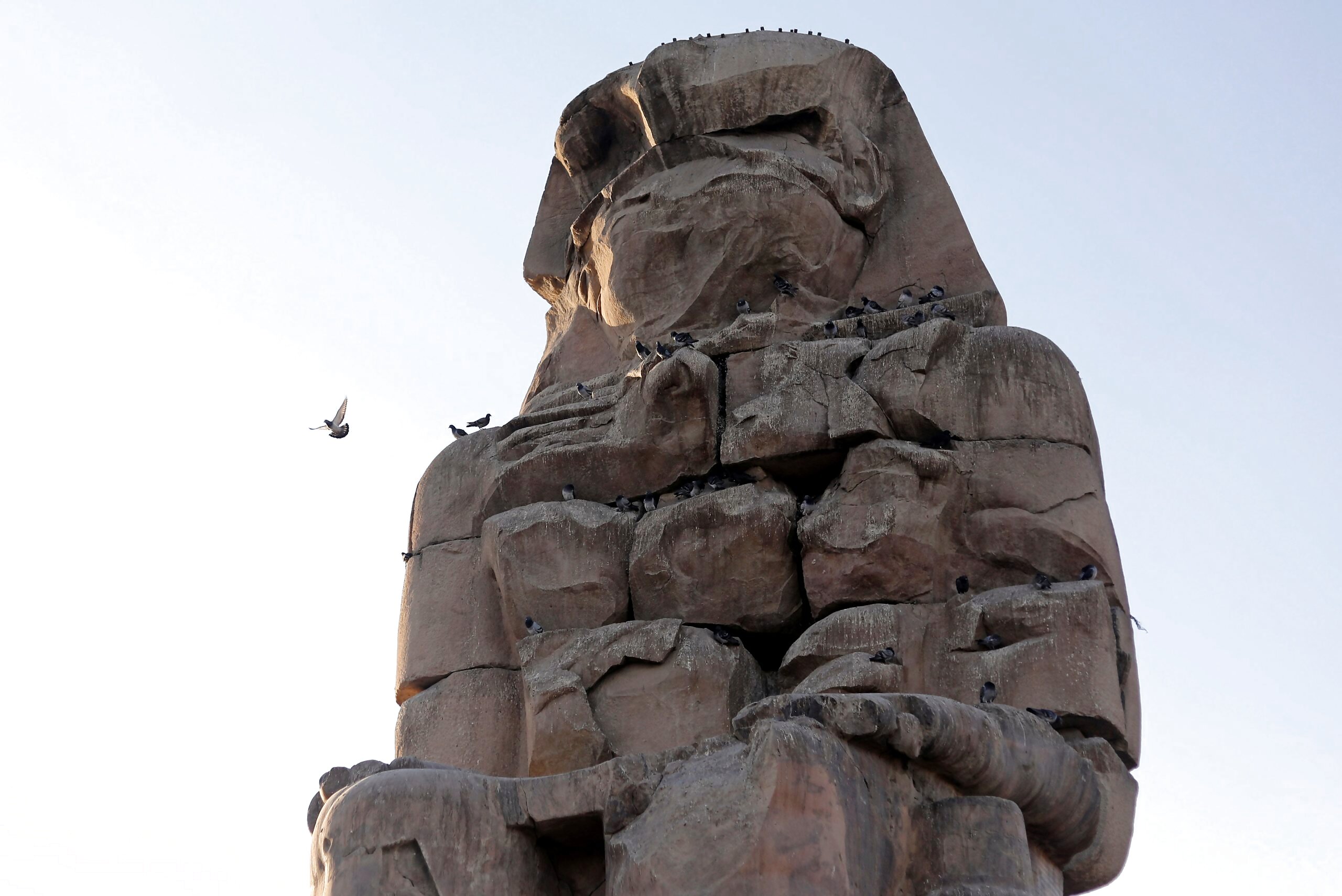
views
A team of scientists has revealed the face of the fabled Egyptian king Amenhotep III, known as the richest person to ever live. Using the remains of his mummy, an international team of researchers created the first facial reconstruction of this famous Egyptian king after thousands of years of curiosity.
Amenhotep III was the grandfather of Tutankhamun who reigned in Egypt in the 14th century BC and was revered as a divine ruler. Under his rule, Egypt flourished economically and politically, earning him acclaim as one of the greatest pharaohs, immortalised in dozens of statues. Using data from the skull of his mummy, a multinational team has unveiled his true likeness for the first time in nearly 3,400 years, The Daily Mail reported.
Who was Amenhotep III?
Amenhotep III, an important figure in the Eighteenth Dynasty, constructed and renovated numerous temples across Egypt, including those in Luxor, Memphis, Elkab, and Armant. During his time, he also commissioned a series of scarabs adorned with extensive inscriptions detailing the events of his reign.

‘King built or rebuilt many temples’
Led by Brazilian graphics designer Cicero Moraes, the team meticulously recreated Amenhotep’s features, imbuing life into ancient history. Moraes expressed astonishment at the vivid portrayal, including attire and accessories. Named after the sun god Amun, Amenhotep III spearheaded monumental construction projects across Egypt and Nubia, reflecting his opulent reign. Speculation abounds regarding the king’s opulence, with suggestions that his mummy was adorned entirely in gold leaf, resembling a deity.
“The king built or rebuilt many temples in the country (Luxor, Memphis, Elkab, Armant). At Thebes he had a vast temple constructed to his own cult on the West Bank; the colossal statues (known as the Colossi of Memmon, before the entrance) are the most monumental elements still standing. He also built at Thebes a palace complex (Malqata) which was until the 1900s relatively well preserved,” according to University College London (UCL).

Dr. Michael Habicht, an archaeologist at Australia’s Flinders University shed light on Amenhotep’s physical condition, depicting him as an obese and ailing ruler. Despite his diminutive stature, standing at approximately 156cm, Amenhotep’s wealth and influence were unparalleled in his time, potentially making him the richest individual of antiquity.
“He might well have been one of the richest men that ever lived, at least in his epoch,” Dr. Habicht was quoted as saying by The Daily Mail. “Research carried out in the 1970s described Amenhotep III as an obese, sick, and sedentary man, who was almost bald and suffered from dental problems in the last years of his life. “Although he was one of the truly great kings of Egypt, his body height is about 156cm, making him one of the smallest kings we know from their preserved mummies.”
Last year, scientists unveiled what Egyptian King Tutankhamun would have looked like during his reign of power over 3,300 years ago. Using a digital model of his mummified skull, researchers managed to re-create the face of King Tut. “He looks like a young man with a delicate face,” said Brazilian graphics expert and co-author Cicero Moraes in a study that is set to be published in the Italian Journal of Anatomy and Embryology. “Looking at him, we see more of a young student than a politician full of responsibilities, which makes the historical figure even more interesting.”



















Comments
0 comment